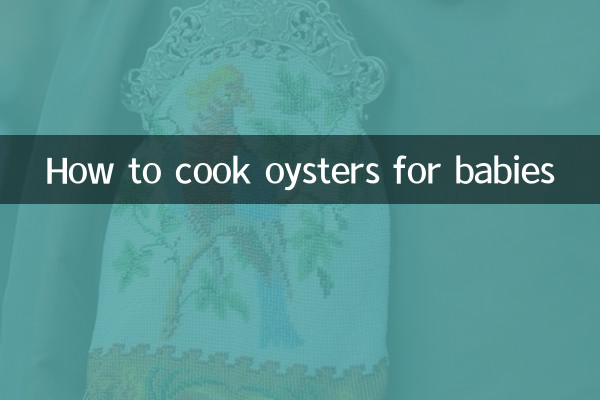How to prepare oysters for babies: Nutrition and safety guide
In recent years, oysters have gradually become a popular ingredient on family tables due to their rich nutritional value. But for infants and young children, how to safely eat oysters has become a confusion for many parents. This article will combine the popular parenting topics in the past 10 days on the Internet to provide you with a detailed guide to oyster supplementary food.
1. Analysis of nutritional value of oysters

Oysters are one of the natural foods with the highest zinc content. They are also rich in protein, iron, calcium and other key nutrients that babies need for growth. The following is a nutritional comparison between oysters and other common complementary foods:
| Ingredients (100g) | Protein(g) | Zinc (mg) | Iron(mg) |
|---|---|---|---|
| Oysters | 9.0 | 78.6 | 5.8 |
| beef | 26.0 | 7.6 | 3.3 |
| egg | 13.0 | 1.1 | 1.8 |
2. Appropriate age and precautions
According to recent parenting expert advice:
Special attention is required:
3. Recommended recipes for popular oyster supplements
| Recipe name | Applicable age | main ingredients | cooking time |
|---|---|---|---|
| Oyster vegetable porridge | 12m+ | Oysters, rice, carrots | 30 minutes |
| Baked Oysters with Cheese | 18m+ | Oysters, cheese, potatoes | 25 minutes |
| Oyster Steamed Egg | 15m+ | Oysters, eggs | 15 minutes |
4. Detailed recipes for oyster and vegetable porridge
Recipes that have recently gained rave reviews among moms:
5. Recent hot topics in parenting
According to the data analysis of the entire network, the high-frequency words related to infant and young child complementary foods in the past 10 days include:
Experts recommend: When introducing oysters and other seafood, there should be a gap of 3-5 days between other new foods to accurately determine the source of allergens. At the same time, oysters are difficult to chew, so it is recommended that babies under 1 and a half years old eat them in puree form or chopped into pieces.
By introducing oysters scientifically and rationally, it can not only enrich the baby's taste experience, but also effectively supplement zinc and other easily deficient nutrients. But remember to follow the principle of "from less to more, from fine to coarse" to ensure the safety of your baby's diet.

check the details

check the details